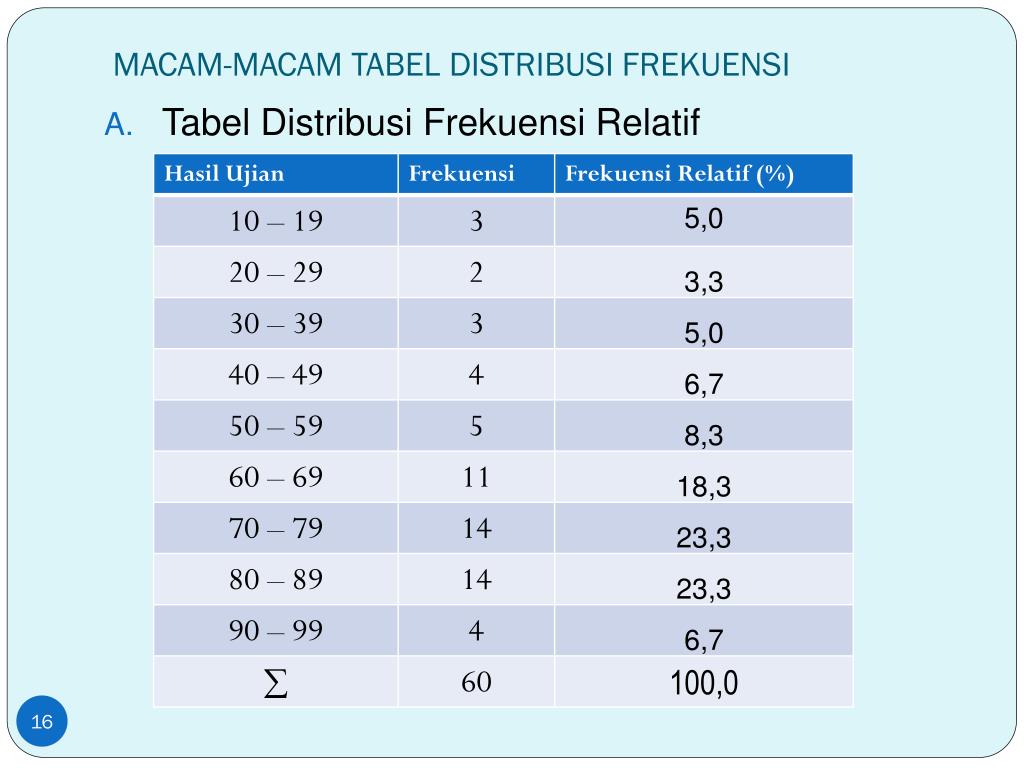When it comes to analyzing and interpreting data, one important aspect is the distribution of frequencies, or “distribusi frekuensi” in Indonesian language. This statistical concept provides valuable insights into the patterns and characteristics of a dataset, allowing researchers and analysts to make informed decisions. In this article, we will delve into the intricacies of distribusi frekuensi, exploring its definition, importance, calculation methods, and practical applications. So, let’s begin our journey into the world of distribusi frekuensi!
What is Distribusi Frekuensi?
Distribusi frekuensi refers to the organization and presentation of data in a tabular form, where values are grouped into intervals or classes and their respective frequencies are recorded. It helps in summarizing large datasets and understanding the distribution of values across different ranges. By grouping similar values together, distribusi frekuensi provides a clearer picture of the data, making it easier to identify trends and patterns.
The Importance of Distribusi Frekuensi
Distribusi frekuensi plays a crucial role in various fields, including statistics, economics, finance, and social sciences. Here are some key reasons why understanding and analyzing distribusi frekuensi is important:
- Data Summarization: Distribusi frekuensi allows researchers to summarize large datasets into a more manageable form, making it easier to interpret and communicate the findings.
- Pattern Identification: By organizing data into intervals or classes, distribusi frekuensi helps in identifying patterns, trends, and outliers within the dataset.
- Descriptive Statistics: Distribusi frekuensi is a fundamental tool for calculating various descriptive statistics such as mean, median, mode, and standard deviation.
- Data Visualization: By plotting the frequency distribution on a graph, it becomes visually appealing and easier to understand for both researchers and stakeholders.
- Inferential Statistics: Distribusi frekuensi forms the basis for many inferential statistical techniques, enabling researchers to make predictions and draw conclusions about a population based on sample data.
Calculating Distribusi Frekuensi
Now that we understand the importance of distribusi frekuensi, let’s explore how to calculate it. The process involves several steps:

